- What are the first and last drawings you painted for the Syrian revolution? How does your feeling then differ from your feeling now?
I painted my first drawing September 7, 2011. It was a new experience for me, one that began by coincidence, without previous planning. At the same time, I felt it was the beginning of a bigger, alternative project for Kafr Nabl banners.
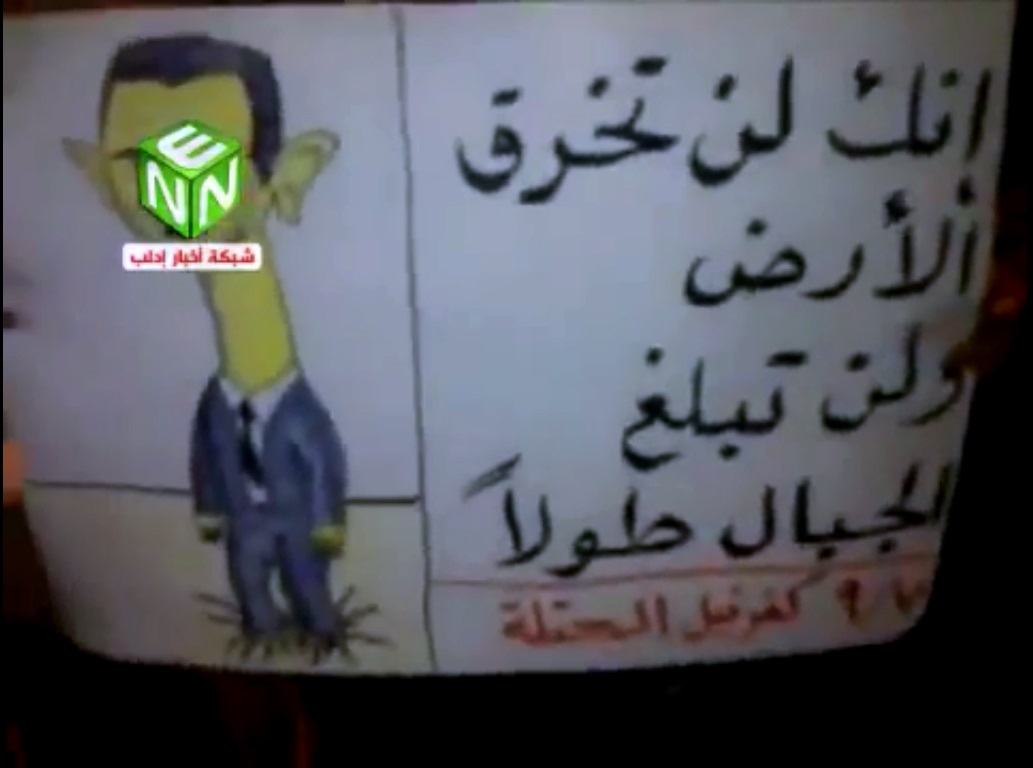
I created my last drawing on Nov. 30, 2018, a week after Jabhat al-Nusra assassinated Raed al-Fares and Hamoud al-Juneid.
I knew it would be my last while I was working on it. Even if I was not arrested or assassinated, I would be displaced and would no longer be able to make drawings for protests.
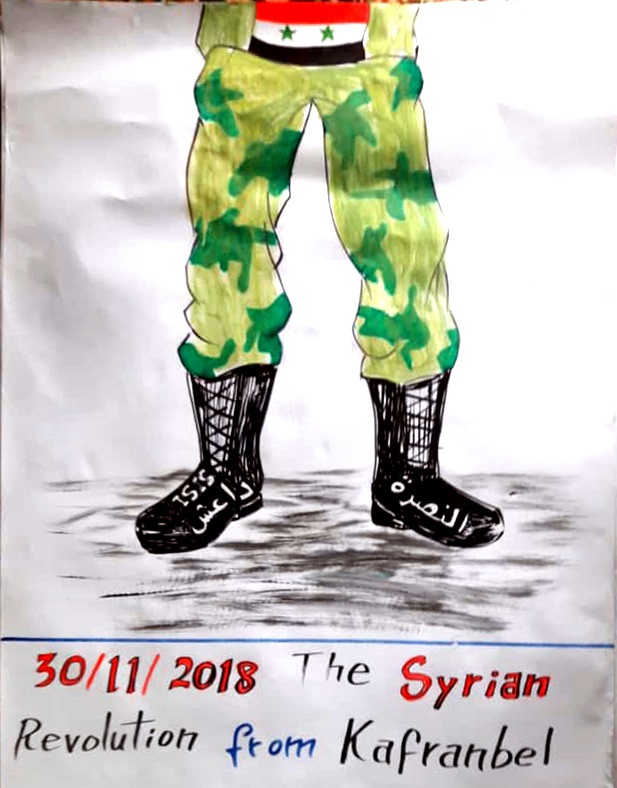
- Your life was directly threatened. Who was making these threats? When? Why?
The Assad regime, the Islamic State (IS) and Jabhat al-Nusra repeatedly threatened me for the same reason. It was because I criticized them and called them out on their crimes through caricatures and banners.
Jabhat al-Nusra’s threats were different because they did not target me directly. Instead, my colleague Raed al-Fares was threatened several times with arrest or with shutdown and seizure of the Union of Revolutionary Bureaus (URB) that he founded (it happened once because of a drawing that appeared in in Al-Mantara magazine which was published by this organization).
After I accused Jabhat al-Nusra of assassinating Raed and Hamoud, I was threatened with assassination and arrest, but not from official Jabhat Al-Nusra sources, rather from members affiliated with the organization.
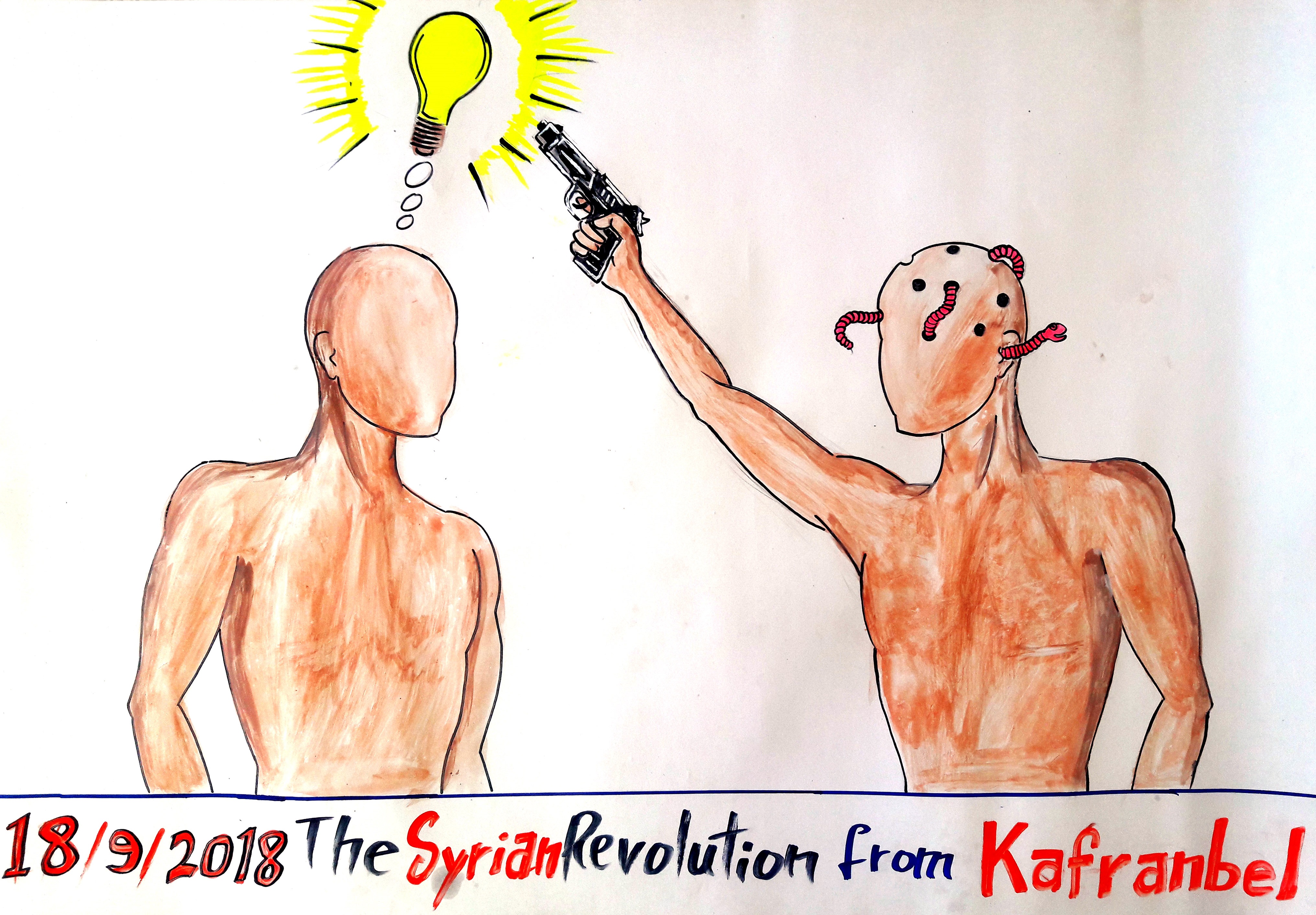
- What was the first thing that came to your mind after hearing about the assassination of your colleagues Raed and Hamoud?
When I heard about the assassination of my friends and colleagues, I directly thought of the criminal (Jabhat al-Nusra), and I was in a state of shock and denial for several days. I stayed inside and refused to make any statements to the media. I did not even share any posts on social media. I then returned to reality and attacked Jabhat al-Nusra through Facebook. I also wrote several banners and created drawings that protesters raised during the angry demonstration that was staged a few days after the assassination. The last drawings and banners that I made were raised during the Friday protest (a week after the crime) before I left home and hid.
- How do you protect yourself now, and how do you deal with the drawings and protests and everything that is happening? Tell us about your life. How do you spend your days in hiding?
I was hiding in Kafr Nabl at the house of an acquaintance. I never leave home because it is too risky. And, the danger is real. I can say I live in a hole that I dug for myself. Since there are no protesters who dare raise my banners at the moment, I resorted to social media to criticize Jabhat al-Nusra through posts, designs and digital posts.
I had to leave Kafr Nabl a few days ago because Jabhat al-Nusra now has more time to pursue me, with its battle with the Free Syrian Army (FSA) factions over. I am now in areas outside their control.
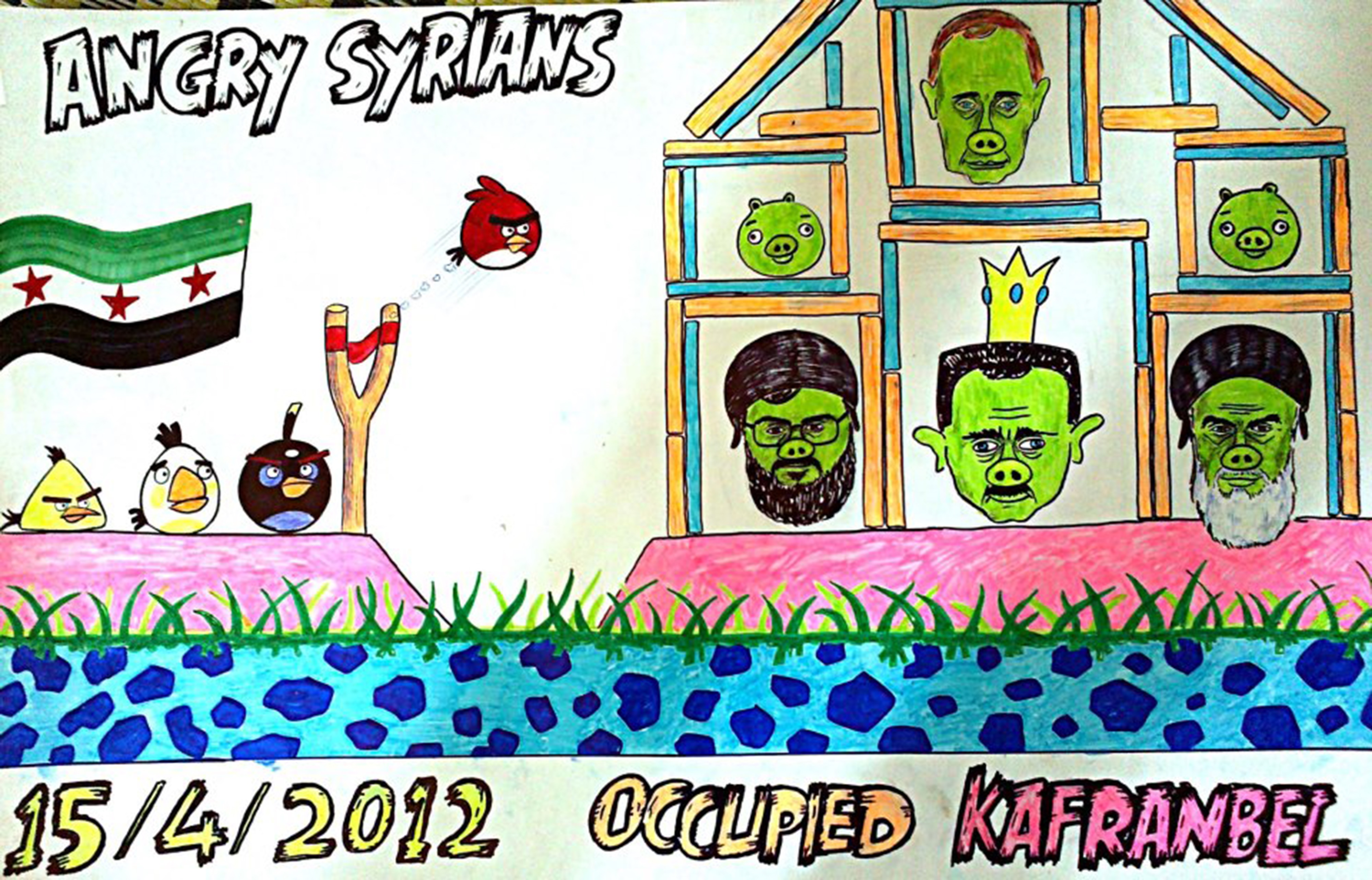
- The conflict with Al-Qaeda currents in Syria and their opposition to peaceful activity and to protesters are evident. But, the question remains: Why did these currents manage to isolate peaceful protests? How did they succeed in duping the inhabitants and some activists, in the past and now? As one of the rare key players and witnesses to the relations between the peaceful protests and jihadist organizations, can you tell us more about this? Are all Islamist organizations alike, or do they differ?
First, peaceful protests witnessed a setback in general, after the revolution took a turn to militarization. People lost faith in the impact of these protests, amid the silence of the international community. Civilians were left as preys to the criminal of the era. Weapons became the stronger tool facing the regime.
Radical Islamist organizations took advantage of the Muslim majority in Syrian society and exploited religion, just like the regime exploited the notions of resistance and resilience to rule the people. Islamist organizations capitalized on the rampant corruption in the ranks of the FSA and exaggerated rumors to demonize the FSA and dismiss it as corrupt and mercenary. With that, the organizations appeared as saviors capable of rescuing the helpless Muslim people. When they first emerged, they garnered wide public support, but with time, their flaws surfaced, as did their exploitation of religion and their violation of civilians’ rights. Everyone could see their true colors, but it was too late because they had already seized most of the opposition-held areas.
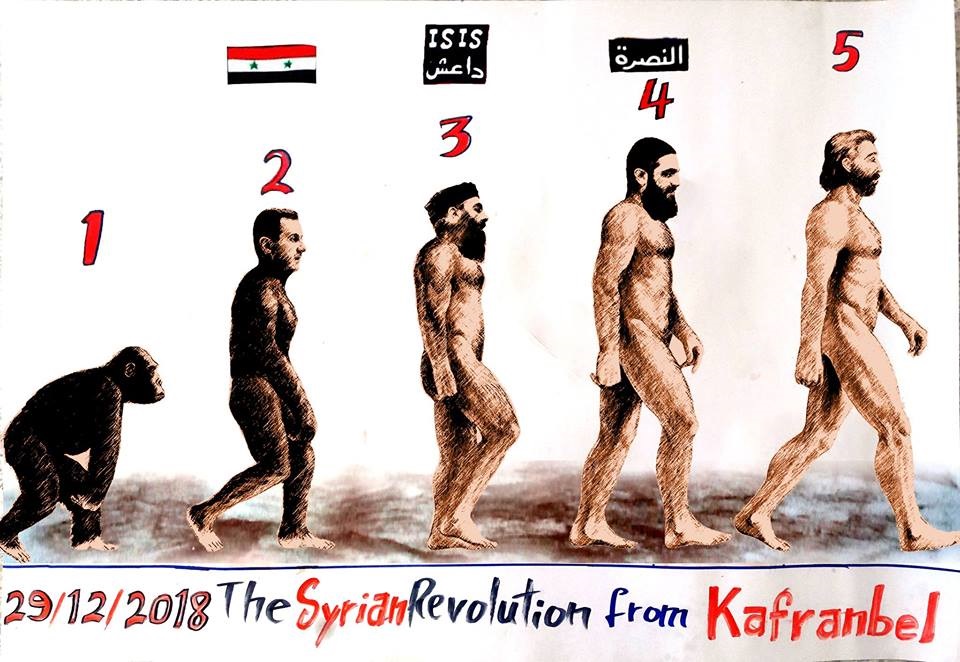
Organizations with totalitarian thought do not accept others’ opinion or pluralism, no matter how different they are. Speech is the archenemy of a tyrant. The regime oppressed protesters and tried to eliminate its opponents. Al-Qaeda and its remnants also pursued opinion activists and sought to arrest and kill them, as did the Kurdistan Workers’ Party (PKK).
Islamist organizations are not similar, but the problem is authoritarianism and extremism, not Islam. Any party or current has the right to rule, be it religious, nationalistic or otherwise. But, it has to secure democracy and accede to power through elections.
- A report published on Enab Baladi website reads, “Turnout to the recent protest in Kafr Nabl was very low and shy, after Raed who hails from the town itself and who is the most important figure in north Syria, passed away.” How do you explain this? Why this decrease in participation? Is it out people’s fear, despair or loss? Can peaceful protests return in the future? How so?
After Hamoud and Raed were killed, two protests emerged:
The first expressed anger in the aftermath of the crime, three days later. Only 500 protesters took part, which is a low number compared to the gravity of the incident. Besides, half of the participants were activists from nearby villages. From Kafr Nabl itself, only friends and relatives of the deceased participated.
The second protest was staged on Friday, a week after the crime. Only 30 protesters showed up (relatives and close friends). During the protest expressing anger, some shouted accusations against Joulani, blaming her for the crime. Everybody expected security forces affiliated with Jabhat al-Nusra to be present at the protest location on Friday. For that reason, nobody dared to show their face in the protest square. There were ten local correspondents present to tape the protest, after which somebody told me verbatim, “None of us dare to post photos of the protest on our personal pages. We will email you the photos, and you can post them if you want.” Unfortunately, they did not send me anything by email out of fear that Jabhat al-Nusra might find out, if I was arrested. So, I used the photos a friend took, and I published them.
Of course, their fear was justified because the banners were strong and direct, unlike the banners raised during the anger protest, which were diplomatic and light.
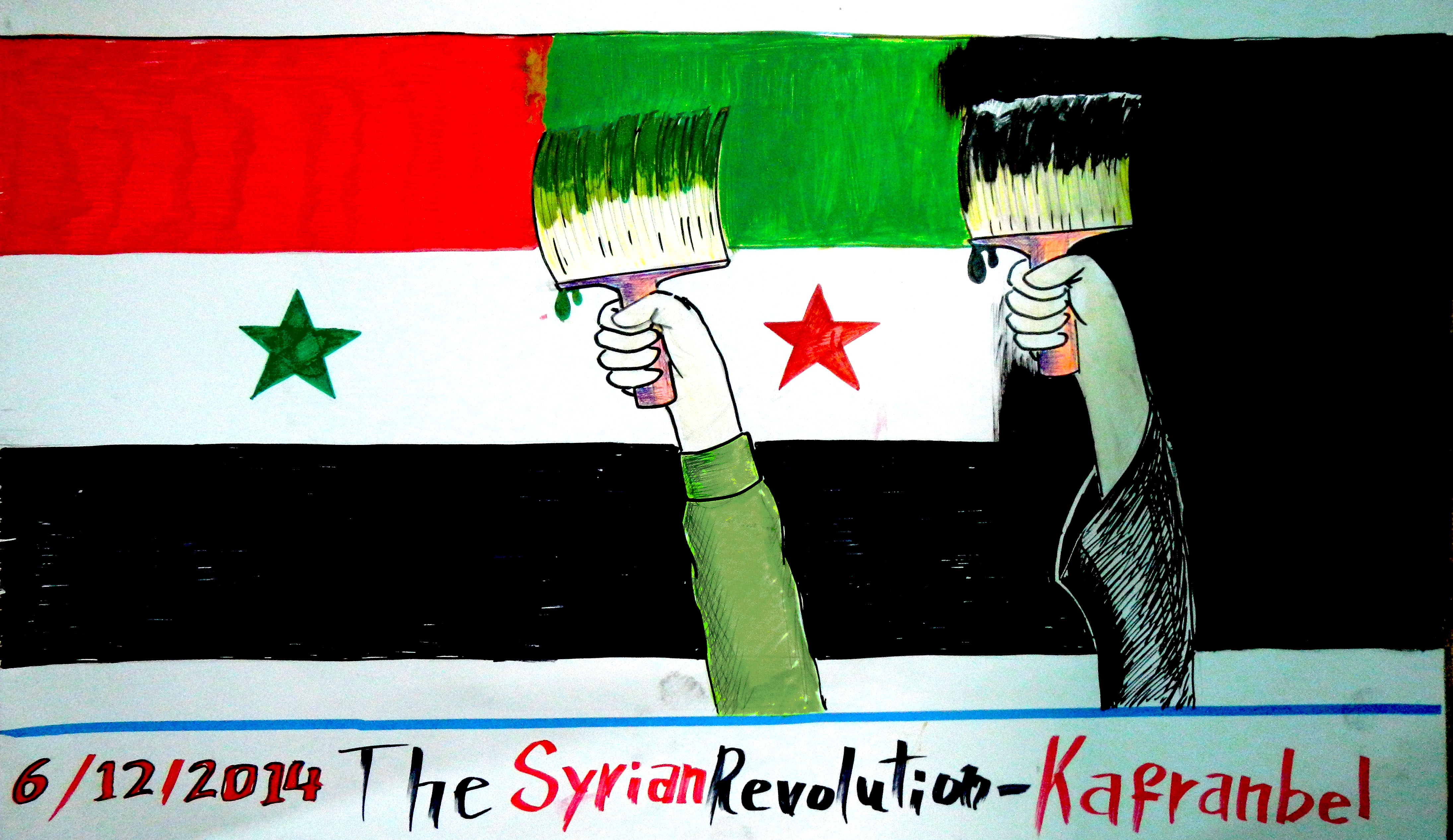
In general, people’s fear of protesting is justified, because a prominent figure in north Syria was assassinated, while another was arrested (rights’ activist Yasser al-Salim) around four months ago. For that reason, people became convinced that they would be added to the list of martyrs or arrested people in vain. Everybody had realized that the fate of the opposition-held territories depended on international agreements and that there was no use for peaceful or armed struggle.
The peaceful protests were initiated by the 2011 rebels, but they are now either martyrs, arrested or displaced. This largely affected the movement. We currently need a bold category of people capable of taking a stand and making a change. But, in the end, peaceful protests ail, but they do not die. There will always be courageous people, and we are banking on the young generation.
- You recently posted on Facebook about the Free Syrian Army (FSA) targeting Jabhat al-Nusra. Who is the FSA today? Could this be an attempt to establish a “new resistance” facing Jabhat al-Nusra on the military and civilian levels? Even if that happens, can there be two fronts: the regime, on the one hand, and the extremist currents, on the other?
Unfortunately, the FSA has become a tool for Jabhat al-Nusra and has to hand the latter part of its military supplies as a price to guarantee its continued presence. The FSA does not have influence, decision-making power or business in the security or administration of its areas. Of course, the equation does not include factions opposing Jabhat al-Nusra and that are endangered, like Nour al-Dine el-Zenki (which was disbanded), Ahrar al-Sham and Suqour al-Sham. There is currently no faction that can confront Jabhat al-Nusra, which clearly enjoys international support. FSA members who are not satisfied with the situation and who work covertly and individually without referring to their leaders attacked Jabhat al-Nusra checkpoints. These members use the guerrilla war style. Of course, these attempts could turn into public resistance, but everybody is waiting to see where the situation is headed (everybody knows that Jabhat al-Nusra has international support. At the same time, a day will come when its elimination will be ordered. Everybody is now anticipating and waiting).
Despite its weakness in governing its areas and its lack of organization and centralization, unlike other Islamist organizations, the FSA was courageous and capable of fighting the regime (the FSA liberated around 80% of the Syrian territories previously). Just like it fought the regime, it can fight radical groups and protect its areas. But, it always loses facing these groups due to ideological reasons. These organizations have Shariah clerics who justify the war with the FSA and urge their members to fight fiercely and shed blood. The FSA considers the regime its main enemy. Anything else are marginal battles, and most FSA members have red lines when it comes to killing other factional members.
The FSA is considered secular. Its members fear God and do not kill Muslims randomly, unlike Islamist factions that claim implementing the Islamic Shariah and kill Muslims without mercy. Bloodshed is normal for them.
8) How do you assess the Turkish stance in north Syria?
Turkey might be the best in dealing with the Syrian people. But, of course, it serves its regional interests first. Everyone exploited the Syrian situation, including Turkey, and Erdogan proved to be the best bargainer.
Turkey’s relations with Jabhat al-Nusra are no secret. Turkey has used this organization to serve its interests by enclosing factions that do not obey it and forcing them to disband themselves and join the national army or the Turkish Euphrates Shield. Turkey might take advantage of Jabhat al-Nusra in its war with the PKK in eastern Euphrates and might use the organization as pressure card in its negotiations with Russia and the US. These are all political analyses that might be wrong or right, but coordination between Turkey and Jabhat al-Nusra is a reality.
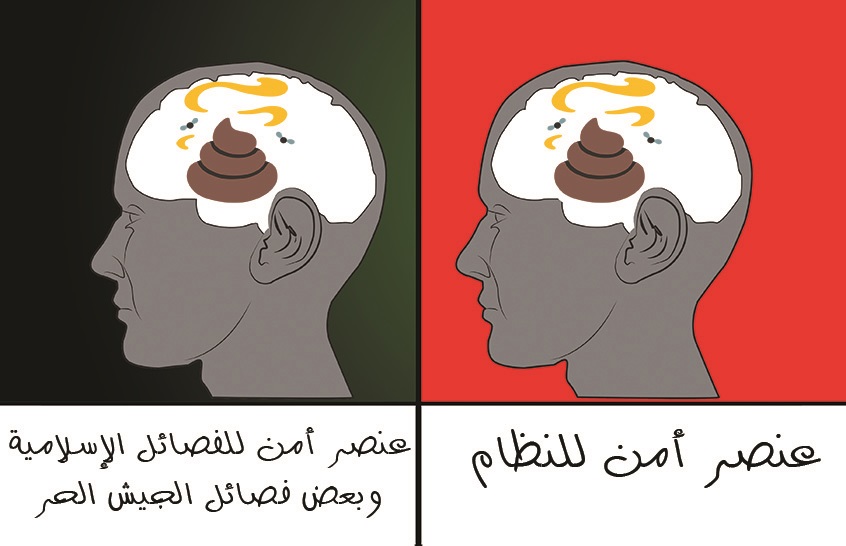
9) What does Ahmad Jalal dream of today?
I dream of fulfilling the goals of the first revolution which marched against oppression, corruption and injustice. I dream of a state of law; a democratic state where citizens’ rights are secured and granted equally. I dream of a state that respect plurality and the freedom of opinion and where the value of the citizen is above all other considerations. I dream of a state that rises to the level of huge sacrifices that the Syrian people have made.



